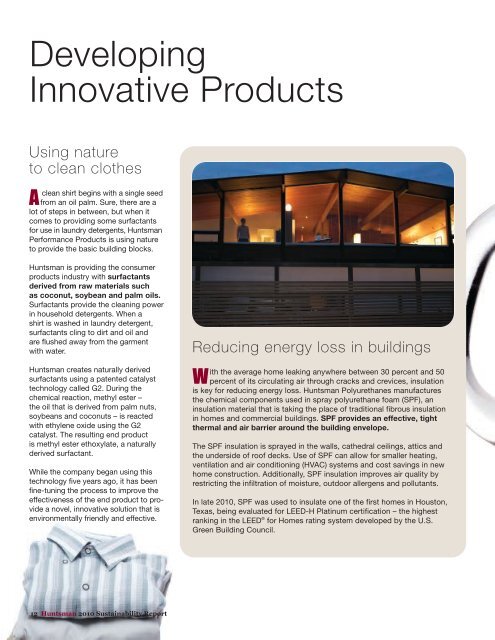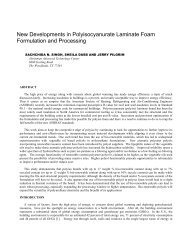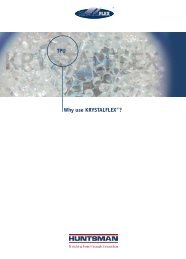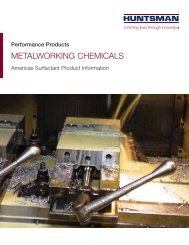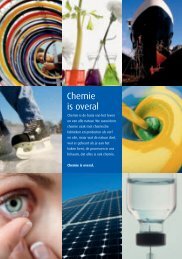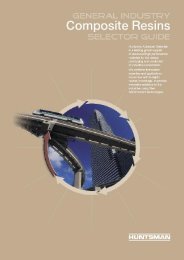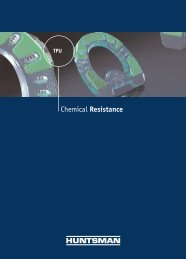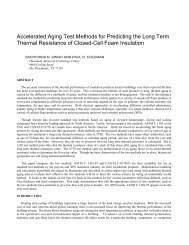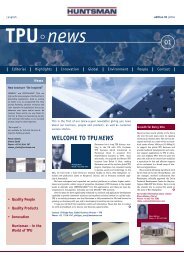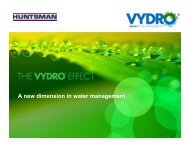We See A Better World
We See A Better World
We See A Better World
You also want an ePaper? Increase the reach of your titles
YUMPU automatically turns print PDFs into web optimized ePapers that Google loves.
Developing<br />
Innovative Products<br />
Using nature<br />
to clean clothes<br />
A clean<br />
shirt begins with a single seed<br />
from an oil palm. Sure, there are a<br />
lot of steps in between, but when it<br />
comes to providing some surfactants<br />
for use in laundry detergents, Huntsman<br />
Performance Products is using nature<br />
to provide the basic building blocks.<br />
Huntsman is providing the consumer<br />
products industry with surfactants<br />
derived from raw materials such<br />
as coconut, soybean and palm oils.<br />
Surfactants provide the cleaning power<br />
in household detergents. When a<br />
shirt is washed in laundry detergent,<br />
surfactants cling to dirt and oil and<br />
are flushed away from the garment<br />
with water.<br />
Huntsman creates naturally derived<br />
surfactants using a patented catalyst<br />
technology called G2. During the<br />
chemical reaction, methyl ester –<br />
the oil that is derived from palm nuts,<br />
soybeans and coconuts – is reacted<br />
with ethylene oxide using the G2<br />
catalyst. The resulting end product<br />
is methyl ester ethoxylate, a naturally<br />
derived surfactant.<br />
While the company began using this<br />
technology five years ago, it has been<br />
fine-tuning the process to improve the<br />
effectiveness of the end product to provide<br />
a novel, innovative solution that is<br />
environmentally friendly and effective.<br />
12 Huntsman 2010 Sustainability Report<br />
Reducing energy loss in buildings<br />
With the average home leaking anywhere between 30 percent and 50<br />
percent of its circulating air through cracks and crevices, insulation<br />
is key for reducing energy loss. Huntsman Polyurethanes manufactures<br />
the chemical components used in spray polyurethane foam (SPF), an<br />
insulation material that is taking the place of traditional fibrous insulation<br />
in homes and commercial buildings. SPF provides an effective, tight<br />
thermal and air barrier around the building envelope.<br />
The SPF insulation is sprayed in the walls, cathedral ceilings, attics and<br />
the underside of roof decks. Use of SPF can allow for smaller heating,<br />
ventilation and air conditioning (HVAC) systems and cost savings in new<br />
home construction. Additionally, SPF insulation improves air quality by<br />
restricting the infiltration of moisture, outdoor allergens and pollutants.<br />
In late 2010, SPF was used to insulate one of the first homes in Houston,<br />
Texas, being evaluated for LEED-H Platinum certification – the highest<br />
ranking in the LEED ® for Homes rating system developed by the U.S.<br />
Green Building Council.


